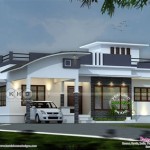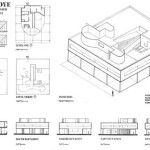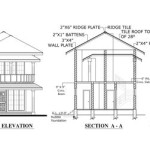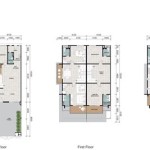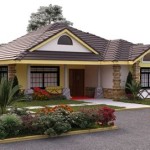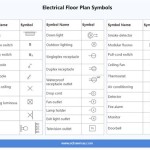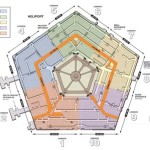Gothic House Plans With Turrets: An Exploration of Architectural Grandeur
Gothic architecture, originating in medieval Europe, is characterized by its pointed arches, ribbed vaults, and flying buttresses. When combined with the whimsical addition of turrets, Gothic house plans evoke a sense of historical grandeur and romanticism. These designs, while often associated with castles and cathedrals, can be adapted for residential construction, offering a unique and visually striking aesthetic. This article will explore the key features of Gothic house plans with turrets, examining their design elements, practical considerations, and historical influences.
The allure of Gothic architecture lies in its dramatic scale and intricate detailing. Turrets, in particular, add a vertical emphasis, creating a sense of height and imposing presence. They serve both an aesthetic and, historically, a functional purpose, offering panoramic views and defensive positions. In modern residential applications, turrets are primarily decorative, but they still contribute substantially to the overall character and style of the house.
Gothic house plans with turrets are not standardized; rather, they represent a diverse range of adaptations and interpretations of the Gothic style. Some designs are historically accurate reproductions, while others incorporate modern elements and materials. Regardless of the specific approach, these plans often share common features that define their Gothic character.
Key Features of Gothic House Plans With Turrets
Gothic-inspired homes with turrets often possess distinctive architectural traits. These features contribute to their unique aesthetic and are important considerations during the design and construction phases.
Pointed Arches and Vaulted Ceilings: A defining characteristic of Gothic architecture is the pointed arch. Unlike rounded arches, pointed arches distribute weight more efficiently, allowing for taller and more slender structures. This principle is applied to windows, doorways, and interior archways in Gothic house plans. Vaulted ceilings, another hallmark of the style, create dramatic interior spaces with impressive height and visual interest. Ribbed vaults, where intersecting arched ribs support the vaulted ceiling, are a more elaborate variation. The presence and detailing of these elements directly impact the perceived authenticity and overall aesthetic of the design.
Detailed Stonework and Ornamentation: Gothic architecture is renowned for its intricate detailing. Stone is a common material, often adorned with carvings, tracery, and other decorative elements. Gargoyles, grotesques, and other sculptural features are frequently incorporated into the exterior design, adding a touch of the macabre and the whimsical. The use of intricate window tracery, particularly in stained glass windows, is another important feature. These elements add visual complexity and contribute to the overall sense of grandeur.
Turret Placement and Design: The placement and design of turrets are crucial to the overall aesthetics of Gothic house plans. Turrets are often located at corners or along the front facade, creating a visually balanced and imposing structure. They can be round, octagonal, or square in shape, and may feature crenellations (battlements) at the top, further enhancing their castle-like appearance. The design of the turrets should be consistent with the overall architectural style of the house, incorporating similar materials and detailing. The positioning of the turrets also needs to consider the interior layout, as they can create unique and visually interesting interior spaces.
Practical Considerations for Building a Gothic House With Turrets
While the aesthetic appeal of Gothic house plans with turrets is undeniable, there are practical considerations that must be addressed during the planning and construction process. These factors can impact the cost, complexity, and overall feasibility of the project.
Structural Complexity and Cost: Gothic architecture, with its complex geometries and intricate detailing, inherently requires specialized construction techniques and skilled labor. The vaulted ceilings, pointed arches, and turrets present significant structural challenges, requiring careful engineering and precise execution. The use of stone, a common material in Gothic architecture, can also be expensive and labor-intensive to work with. These factors contribute to the higher cost of building a Gothic house compared to more conventional styles. Prior to embarking on such a project, a comprehensive budget should be established, taking into account the increased construction costs associated with the design complexities.
Energy Efficiency and Insulation: Historically, Gothic structures were not designed with energy efficiency in mind. Modern building codes and environmental concerns necessitate the incorporation of energy-saving features into Gothic house plans. Large windows, a common element of the style, can lead to significant heat loss or gain if not properly insulated. High ceilings and vaulted spaces require efficient heating and cooling systems to maintain comfortable indoor temperatures. The use of modern insulation materials, energy-efficient windows, and geothermal heating systems can help to mitigate these challenges and improve the overall energy performance of the house.
Interior Layout and Functionality: While the exterior of a Gothic house may evoke a sense of historical grandeur, it is important to ensure that the interior layout is functional and meets the needs of modern living. The irregular shapes and angles created by the turrets and vaulted ceilings can pose challenges in terms of furniture placement and space utilization. Careful planning is required to create comfortable and practical living spaces that complement the architectural style. Consideration should be given to natural light, circulation patterns, and the integration of modern amenities, such as kitchens and bathrooms, into the overall design.
Historical Influences and Design Variations
Gothic house plans with turrets draw inspiration from a rich history of architectural styles and movements. Understanding these influences can inform the design process and help to create a more authentic and visually compelling home.
Medieval Gothic Architecture: The primary influence on Gothic house plans with turrets is, of course, the architecture of the medieval period. This includes the great cathedrals of Europe, such as Notre Dame in Paris and Cologne Cathedral, as well as castles and other fortified structures. The key features of medieval Gothic architecture, such as pointed arches, ribbed vaults, and stained glass windows, are often incorporated into residential designs. The scale and detailing of these features may be adapted to suit the size and budget of the house, but the underlying principles remain the same.
Gothic Revival: The Gothic Revival movement, which began in the 18th century and continued into the 19th century, saw a renewed interest in Gothic architecture. This resulted in the construction of numerous Gothic-inspired buildings, including churches, universities, and private residences. Gothic Revival architecture often features more elaborate ornamentation and detailing than its medieval predecessors. It also incorporates modern materials and construction techniques, making it more accessible and affordable. Many Gothic house plans with turrets draw inspiration from the Gothic Revival style, offering a blend of historical authenticity and modern convenience.
Modern Gothic Interpretations: Contemporary architects and designers continue to explore and reinterpret the Gothic style in new and innovative ways. Modern Gothic house plans with turrets may incorporate elements of other architectural styles, such as modernism or minimalism, creating a unique and eclectic aesthetic. These designs often emphasize clean lines, open spaces, and the use of sustainable materials. While they may retain the basic elements of Gothic architecture, such as pointed arches and turrets, they are often executed in a more streamlined and contemporary fashion. The result is a fusion of historical and modern influences, creating a truly unique and personalized home.

58 Gothic Floor Plans Ideas Vintage House

58 Gothic Floor Plans Ideas Vintage House

42 House Designs With A Turret Heritage And New Houses

Plan 17797lv Study In A Vaulted Turret European House Plans

Victorian House Plans Floor The Designers

European Style House Plan 4 Beds 5 Baths 6366 Sq Ft 453 49 Homeplans Com

42 House Designs With A Turret Old And New Houses Victorian Homes Styles Style

1905 Hodgson House Plans Early 20th Century Homes Old Houses For

210 Houses Ideas House Design Floor Plans

Plan 5742ha Dramatic Layout Created By Victorian Turret House Plans Homes And More

